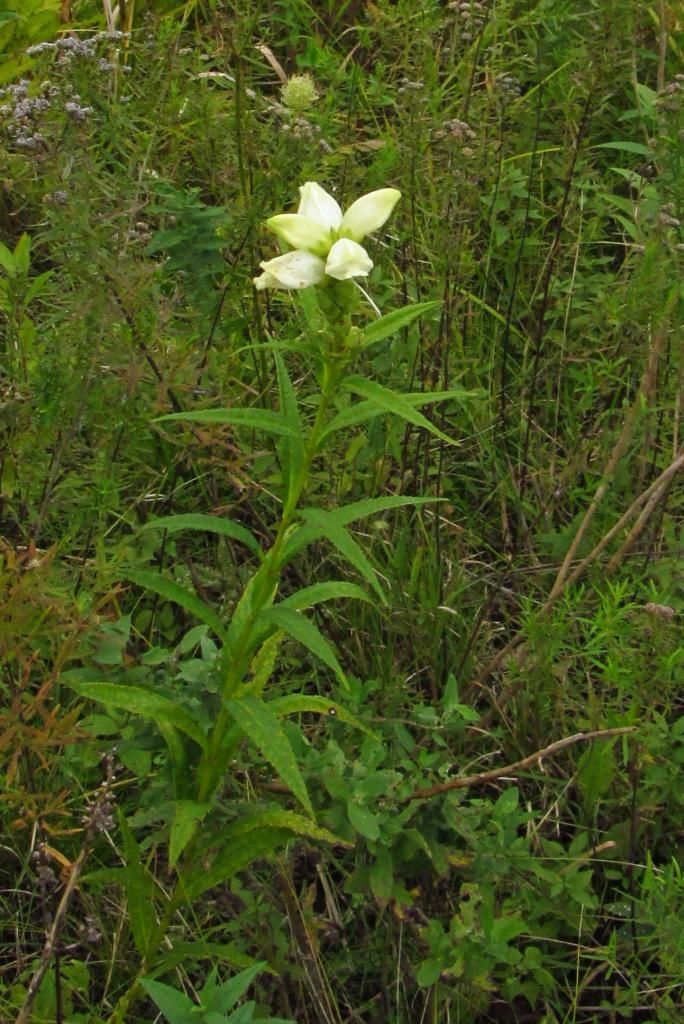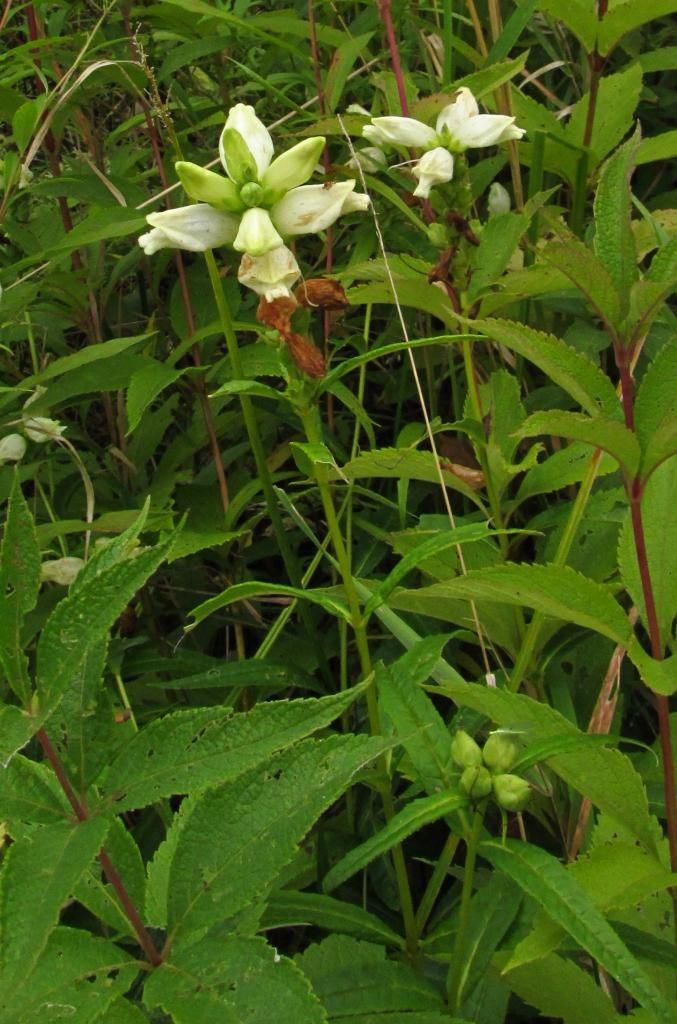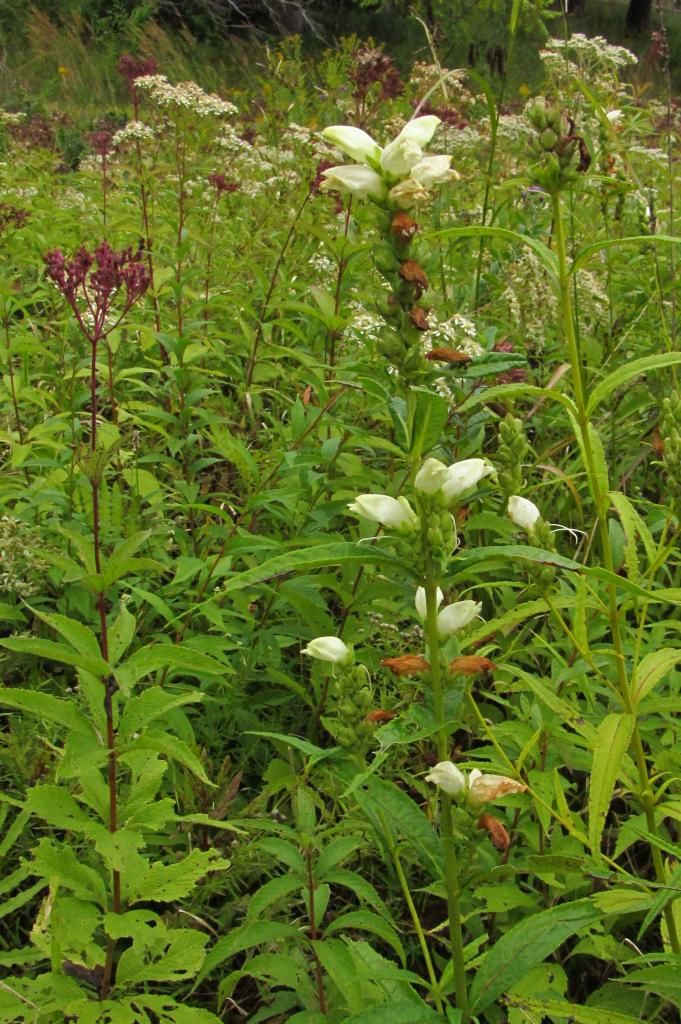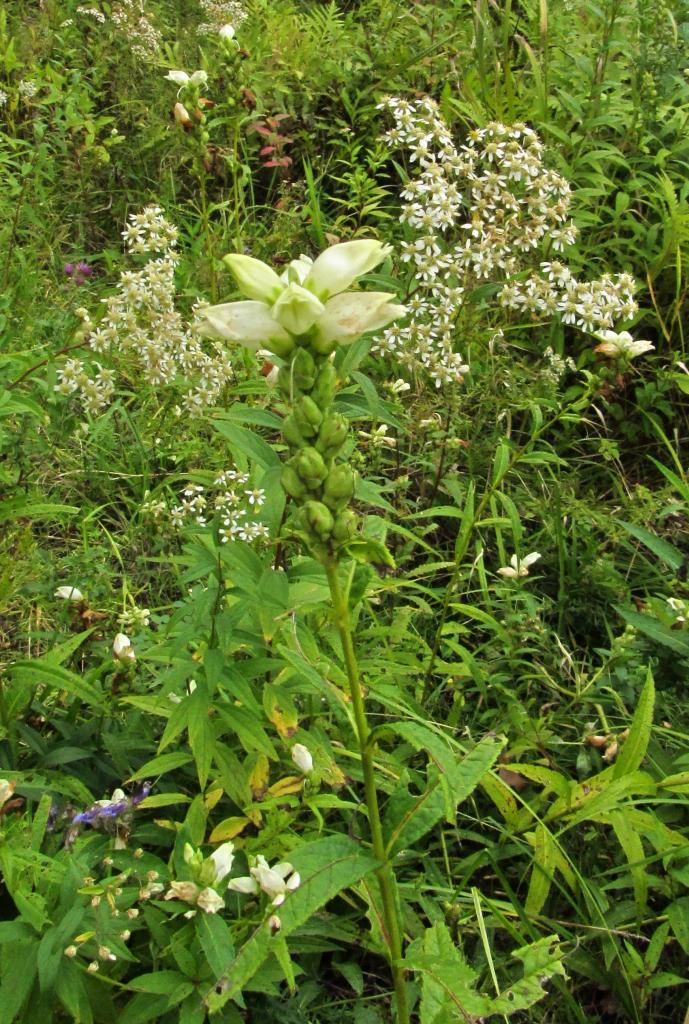Today’s featured plant is native to most of the eastern half of the U.S. and Canada. I was unfamiliar with white turtlehead (Chelone glabra) until Eileen Miller pointed it out to me during a visit to Whiterock Conservancy a few weeks ago. Flowers can appear anytime from July through September, and they are easy to recognize because of the “turtlehead” shape.
I’ve enclosed several pictures of white turtlehead after the jump. This post is also a mid-week open thread: all topics welcome.
Patricia J. Ruta McGhan explains the origin of white turtlehead’s scientific name:
In Greek mythology, there was a nymph named Chelone who insulted the gods; in punishment, she was turned into a turtle. The flowers of this plant are said to look like the heads of turtles. Glabra is from the Latin word meaning smooth because of the lack of hairs or texture on the stems and leaves.
Click here or here for a detailed description of the plant’s features, using correct botanical terms. In layperson’s terms, the plant has hairless stems and long, smooth, leaves with sharply-toothed edges appearing opposite each other along the stems. A cluster of white flowers appears at the top of the stem.
Here are some turtlehead blossoms next to buds that haven’t opened yet; none of the flowers have bloomed yet on the plant in the lower right corner.
The flowers of Chelone glabra can have a slightly pink tinge (although I didn’t see any like that at Whiterock). A similar species with bright pink flowers is called pink or red turtlehead.
White turtlehead plants are usually two to three feet tall but can grow to four feet.
White turtlehead likes sunny, wet areas, and is found throughout Iowa “mostly along streams and in wet thickets or bottom woodlands,” according to Wildflowers of Iowa Woodlands by Sylvan Runkel and Alvin Bull. At Whiterock we saw many growing in a seep near the Middle Raccoon River. The Illinois Wildflowers website says white turtlehead can tolerate temporary flooding and “can be maintained in gardens if it is watered during dry spells.”
The flowers are pollinated by nectar-seeking bumblebees; sometimes they also attract the Ruby-Throated Hummingbird. In the northern half of Illinois, White Turtlehead is the preferred host for caterpillars of the butterfly Euphydryas phaeton phaeton (Baltimore). This butterfly is fairly uncommon. Other insects that feed on the foliage of White Turtle include leaf-mining larvae of the flea beetle Diabolia chelones, larvae of the sawfly Tenthredo grandis, and larvae of the sawfly Macrophya nigra. The seeds are eaten by larvae of the fly Phytomyza chelonei and larvae of the polyphagous moth Endothenia hebesana, while larvae of Papaipema nepheleptena (Turtlehead Borer Moth) bore through the stems (Clark et al. 2004, Smith 2006, Eastman, 1995). The foliage is bitter and usually avoided by White-Tailed Deer and other mammalian herbivores.
Speaking of that bitter foliage, “bitter herb” is one of the other common names for Chelone glabra. And speaking of pollinators, Runkel and Bull write, “When a bumblebee enters the flower and disappears inside after nectar, its movements and the resulting vibration of the flower give the appearance that the bee is being chewed up by the turtlehead blossom.”
I didn’t capture any shots with pollinators, but here’s a closer view of the flowers:
According to Patricia J. Ruta McGhan,
Turtlehead plants are used in natural medicine. Traditional practices create a tonic from this plant that is claimed to be beneficial for indigestion, constipation, and stimulating the appetite. It is also an anthimintic (de-wormer) and a salve from the leaves may relieve itching and inflammation.
Final shot for today: some turtlehead blooming with flat-topped aster in the background.





